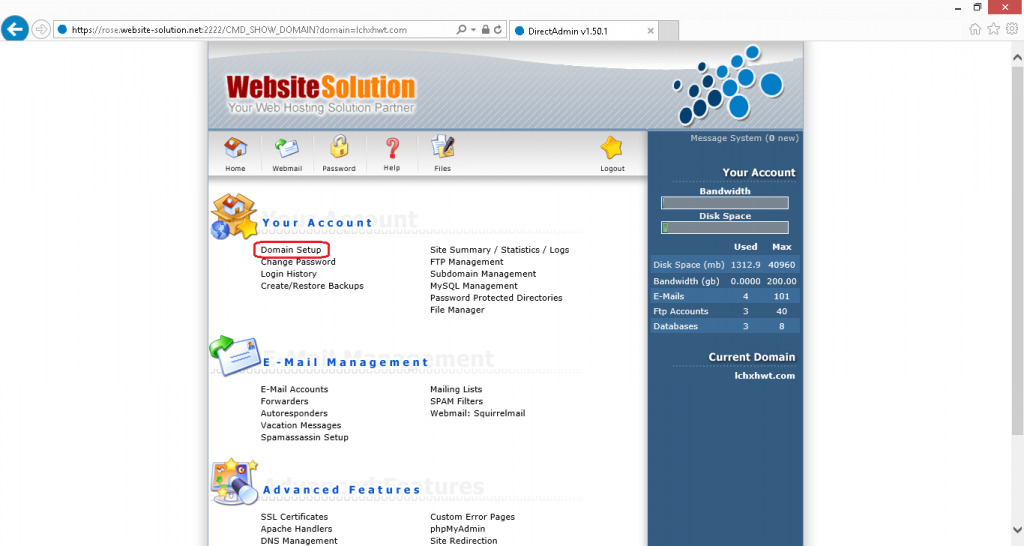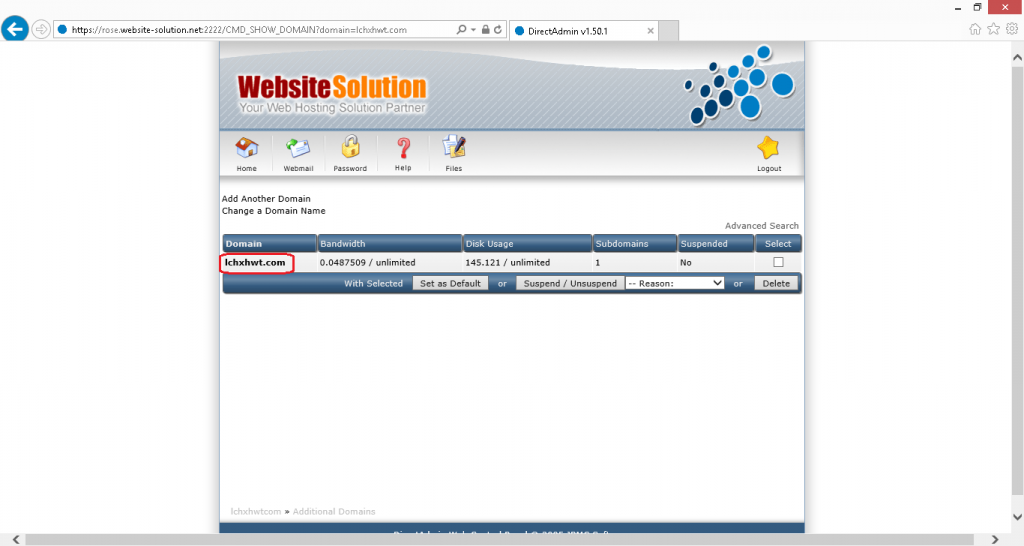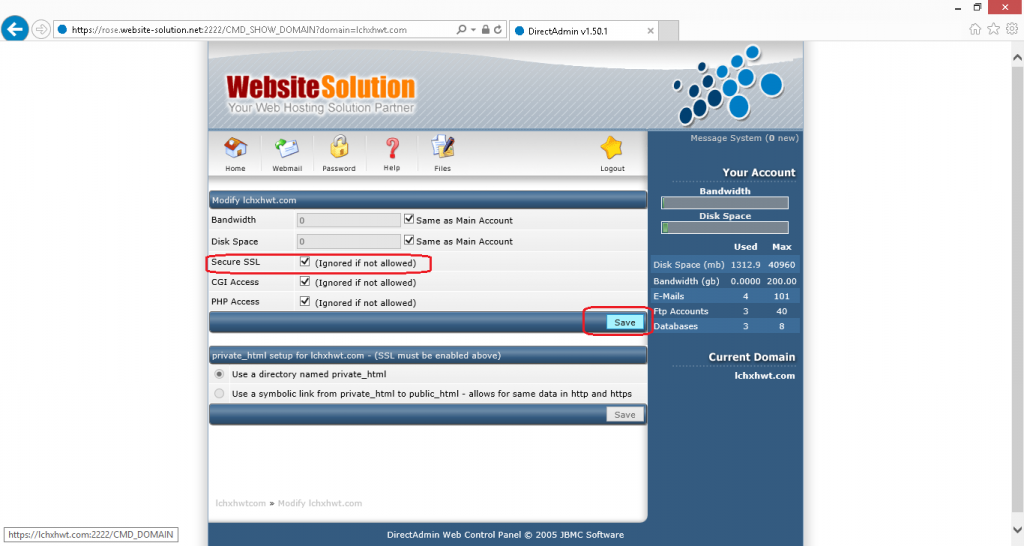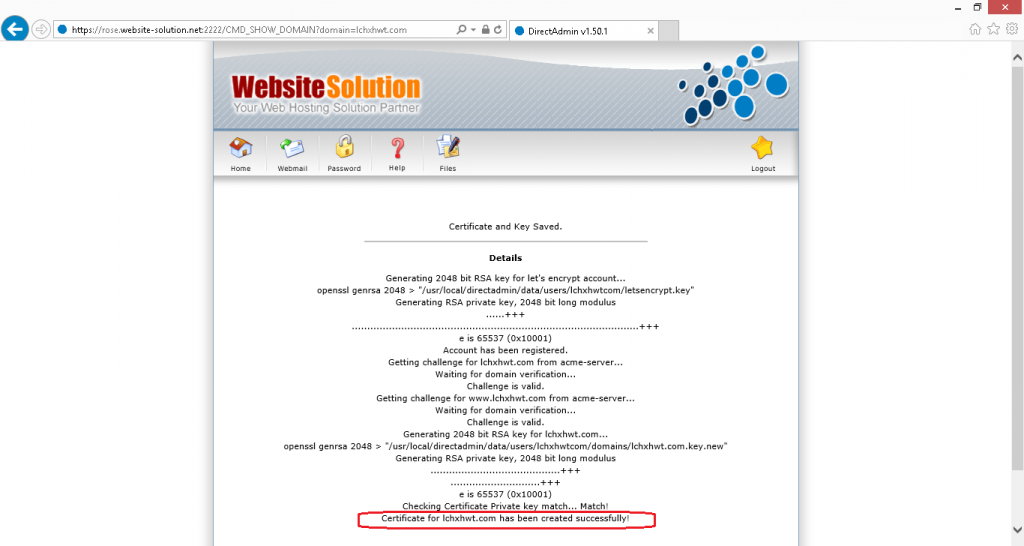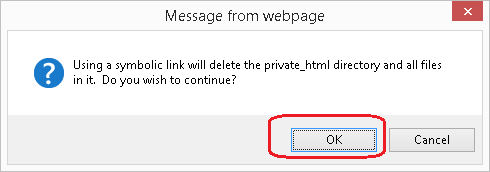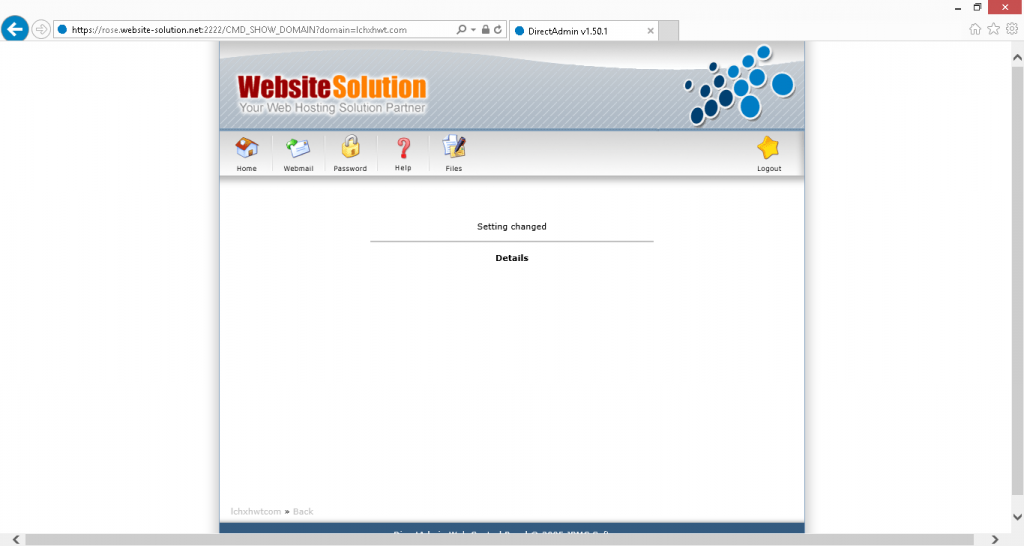We will go through the setting on how to setup a free & automatic SSL certificate, issued from Let’s Encrypt inside DirectAdmin panel.
First step, please login to your DirectAdmin panel.
- Login to DirectAdmin page, enable SSL. Goto Domain Setup.

- Choose your domain name.

- Enable “Secure SSL” (may be already enabled)

- In “Advanced Features” , goto “SSL Certificate”

- In SSL Certificate, please
– select “Free & automatic certificate from Let’s Encrypt” option, and
– put in your email address.

and click “Save”
- DirectAdmin panel will automatically request SSL CSR (certificate signing request), confirm your website status, and get the SSL certificate from Let’s Encrypt.
It may take 30 – 60 seconds.
Once the process completed, you will have the following information.
DirectAdmin panel will show you “Certificate for xxx.com has been created successfully”

- Go back to the DirectAdmin panel home page, and click on “Domain setup”

- Choose your domain name

- You may consider to choose “Use a symbolic link from private_html to public_html – allows for same data in http and https” option, and click “Save”
Note: It will remove the folder /domains/xxx.com/private_html , and create a symbolic link from private_html to public_html for folder sharing.
In most circumstance, that folder private_html is not in use.

System will ask you to agree to delete the private_html directory please click “OK” to finish


- Then, around 5 minutes later, you can start visiting your website via https protocol

Notes:
- Customer websites must be hosted in our web hosting server. Otherwise, it cannot pass Let’s Encrypt automated verification.
- You may consider to add a dedicated IP to your website for best compatibility.
- Without website dedicated IP, the SSL will run in SNI (server name Indication) mode. Some old browsers may not support SNI mode
- SSL(s) issued by Let’s Encrypt valid for 3 months. They should be automatically renewed automatically by DirectAdmin.
In rare circumstance, it cannot automatically renewed. If this case, please re-do it inside DirectAdmin control panel. - Users may consider to use paid SSL (e.g. EV SSL) for best trust and end-user experience
- After SSL installation, in some circumstance, your website contents (links/URL) may be hardcoded in HTTP during website creation in the past. If so, you need to manually update those link/URL
- On and after Sept 2021, user of Android device 7.1.1 or previous cannot visit the website with Let’s Encrypt certificate.
For compatibility details, please refer to: https://letsencrypt.org/docs/certificate-compatibility/

